You are using an out of date browser. It may not display this or other websites correctly.
You should upgrade or use an alternative browser.
You should upgrade or use an alternative browser.
Parthian and Sassanid Armies
- Thread starter Vinduu
- Start date
I think you should give a bit more detail regarding precisely what you want to discuss - such as some specific questions or claims - or the thread won't be very likely to attract a high level of discussion.
This topic will discuss the arms and equipment, tactics and organization of the Parthian and Sassanid Armies throughout the ages with logic and sound information from renown historians. Any unrelated discussion and trouble makers will not be tolerated, thank you.
Louis XXIV
Le Roi Soleil

Well, then discuss it. I hear they rode horsies.
Virote_Considon
The Great Dictator
They also used bows and arrows. Composite bows, in fact.
Parthians and Sassanids knights or Savaran rode stallions, but the Parthians however field light armed horse archers that rode on ponies ideal for hit-and-run tactics and flank attacks.
Parthian did not field any regular infantry, they rely heavily on levies (hamspāh) and foreigners (Romans and Greeks).
Parthian lacks standing army, they could barely field an army that could endure long period military campaign that halted Parthian westward expansion. Romans however took advantages from the Parthian weakness and eventually beaten the Parthians and secure Syria, Anatolia and Egypt for several centuries. Although Parthia was beaten by the Romans, they could still defend themselves from Roman Invasion until they were overthrown by the Sassanids.
Parthian did not field any regular infantry, they rely heavily on levies (hamspāh) and foreigners (Romans and Greeks).
Parthian lacks standing army, they could barely field an army that could endure long period military campaign that halted Parthian westward expansion. Romans however took advantages from the Parthian weakness and eventually beaten the Parthians and secure Syria, Anatolia and Egypt for several centuries. Although Parthia was beaten by the Romans, they could still defend themselves from Roman Invasion until they were overthrown by the Sassanids.
schlaufuchs
Break My Heart
Nice triple post. There is an edit button though, you know.
I'm not very well studied on Pahlava and the Sassanids, but I do find the topic very interesting, and considering the fare we normally get on this subforum I can't condemn you for that. I'm looking forward to what Dachs has to say on these threads, so watching this thread with great anticipation.
I'm not very well studied on Pahlava and the Sassanids, but I do find the topic very interesting, and considering the fare we normally get on this subforum I can't condemn you for that. I'm looking forward to what Dachs has to say on these threads, so watching this thread with great anticipation.
Thank you, as you may know the elite of the Parthian Army are the Savaran or cataphract, but did you know that early Parthian Savaran don't really armed them in iron but leather lamellar and bronze lamellar and scales due to the scarcity of iron. At first cataphract's was to hunt down light horse archer, the cataphract's war gear consists a Kontos lance, and a compound bow with a quiver of arrow, later their role changed as they encounter new enemies notably the Romans. By the 3rd Century CE, cataphracts in iron armor began to appear in the battlefield which indicate the evolution of the cataphract and the purpose of the cataphract due to the prolonged war against the Romans. These iron cavalrymen will become clibanarii by the Romans and eventually the Romans create their own clibanarii to counter the Parthian and later Sassanid threat.
These are units of Pahlava from Euopa Barbarorum or EB:
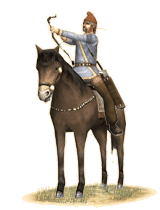
Shivatir-i Pahlavanig (Parthian Horse-Archers)
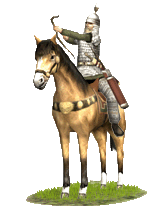
Dehbed Asavara (Parthian Noble Medium Cavalry)
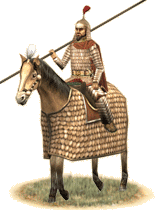
Azad Asavaran (Parthian Noble Cataphracts)
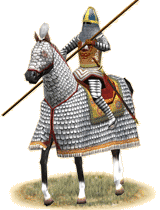
Grivpanvar (Parthian Late Armored Elite Cataphracts)
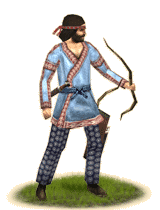
Marda Shivatir (Mardian Archers)
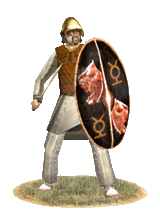
Parthohellenikoi Thureophoroi (Parthian Hellenic Infantry)

Gund-i Nizagan (Parthian Spearmen)
Parthian army relies on horse archer and armored cataphracts but later as they annexed Persia and Mesopotamia local levies and foreign mercenaries was raised to fight under the Parthian banner.
These are the Sassanid Armies from IB:SAI:
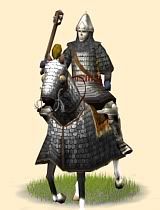
Savârân-î Grivpânvâr
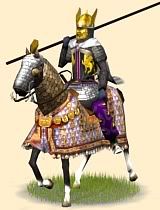
Pushtîghbân Grivpânvâr (Elite of the Elite)

Zhâyedân Grivpânvâr (Immortals in Pahlavi)

Jân-Âvspar (Religious Nobles)
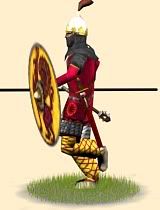
Tabargân-î Daylamîg (Elite Infantry)
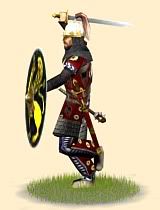
JangAvaran-i Sassani (Heavy Infantry)
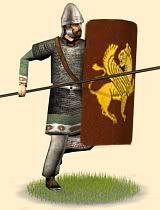
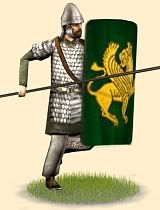
Paighân-î Sassâni: (medium infantry armed with spears and large shields)

Payâhdag-î Nîzagân (Levy Spearmen armed with shield and spear)
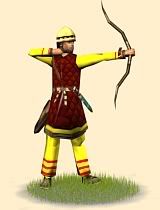
Kamândâr-î Payâhdag (Foot Archers)
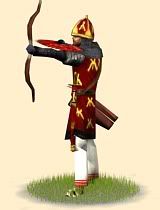
Kamândâr-î Shahi (Elite Foot Archers)
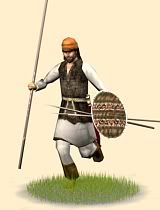
Sêlâbgandân-î Kôrdîg
Sassanid Empire have standing army, making them a difficult opponent to the Romans.
These are the foreign warriors who served the Sassanian army:

Savârân-î Kûshânshahr
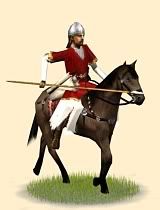
Dawsar
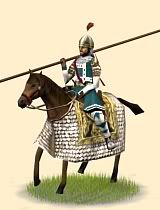
Aspet-i Armeni Lancers

Pîlbân
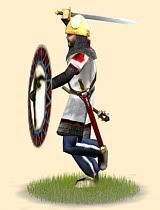
Arteshtâr-î Daylamîg (heavy infantry)
These are units of Pahlava from Euopa Barbarorum or EB:

Shivatir-i Pahlavanig (Parthian Horse-Archers)

Dehbed Asavara (Parthian Noble Medium Cavalry)

Azad Asavaran (Parthian Noble Cataphracts)

Grivpanvar (Parthian Late Armored Elite Cataphracts)

Marda Shivatir (Mardian Archers)

Parthohellenikoi Thureophoroi (Parthian Hellenic Infantry)

Gund-i Nizagan (Parthian Spearmen)
Parthian army relies on horse archer and armored cataphracts but later as they annexed Persia and Mesopotamia local levies and foreign mercenaries was raised to fight under the Parthian banner.
These are the Sassanid Armies from IB:SAI:

Savârân-î Grivpânvâr

Pushtîghbân Grivpânvâr (Elite of the Elite)

Zhâyedân Grivpânvâr (Immortals in Pahlavi)

Jân-Âvspar (Religious Nobles)

Tabargân-î Daylamîg (Elite Infantry)

JangAvaran-i Sassani (Heavy Infantry)


Paighân-î Sassâni: (medium infantry armed with spears and large shields)

Payâhdag-î Nîzagân (Levy Spearmen armed with shield and spear)

Kamândâr-î Payâhdag (Foot Archers)

Kamândâr-î Shahi (Elite Foot Archers)

Sêlâbgandân-î Kôrdîg
Sassanid Empire have standing army, making them a difficult opponent to the Romans.
These are the foreign warriors who served the Sassanian army:

Savârân-î Kûshânshahr

Dawsar

Aspet-i Armeni Lancers

Pîlbân

Arteshtâr-î Daylamîg (heavy infantry)
These modders claimed they have reliable information from Roman historian like Ammianus Marcellinus especially the infantry or Paighan. They point out that in the Siege of Amida, Sassanid infantry with siege equipment, armored Sassanid infantry (possibly regular infantry with dismounted cavalry) and war elephant attack the walls of Amida with sheer ferocity, they were repelled when the Gallic Legionaries launch their counterattack. Then the Roman Emperor Julian the Apostate launch his counterattack and march to Persian capital Ctesiphon as they encounter Shapur II army where their infantry was able to repel Roman infantry attack instead of levies that Roman despised. Ammianus Marcellinus have a clear description about the Sassanid cataphract/clibanarii, he wrote: “Laminarum circuli tenues apti corporis flexibus ambiebant per omnia membra diducti.” (Thin circles of iron plates, fitted to the curves of their bodies, completely covered their limbs). Other description are the war elephants with gleaming metal plates, siege works and detailed map and provinces of Persia.
The description on Sassanian infantry was undermine on purpose because Ammianus Marcellinus intends to save his head from being severed from his body. He wrote: Their infantry are armed like mirmillos, and are as obedient as grooms; and they always follow the cavalry like a band condemned to everlasting slavery, never receiving either pay or gratuity. Despite his attempts to fool the readers, smart readers could tell what is lies or truth if they read his works. The message was simple but confusing, he tells us that Sassanian infantry armed like Mirmillo Gladiator but it have tricks and it requires observation to understand his description. Mirmillo Gladiator was a type of heavy gladiator and what Ammianus Marcellinus wish to tell the readers that Sassanian infantry are heavily armed with spear, long sword, long curved oblong shield covered with fine leather, ridge helmet and chain mail. They are well drilled and disciplined. But in order to confused the readers, he purposely denounced the existence of regular infantry by denying that Sassanians do provide a fixed salary and rewards to the infantry, a cunning and misleading information that could confused readers.
These are the pictures from Bishapur Relief II:

Soldiers with sword

Second group of soldier with a different head gear

A group of cavalry admiring the king

Another group of admiring cavalry
A handful number of people said the Sassanian infantry are probably dismounted cavalry with long spear and large curved shield but the fact is they purposely deny the truth that Sassanian have field regular infantry.
The description on Sassanian infantry was undermine on purpose because Ammianus Marcellinus intends to save his head from being severed from his body. He wrote: Their infantry are armed like mirmillos, and are as obedient as grooms; and they always follow the cavalry like a band condemned to everlasting slavery, never receiving either pay or gratuity. Despite his attempts to fool the readers, smart readers could tell what is lies or truth if they read his works. The message was simple but confusing, he tells us that Sassanian infantry armed like Mirmillo Gladiator but it have tricks and it requires observation to understand his description. Mirmillo Gladiator was a type of heavy gladiator and what Ammianus Marcellinus wish to tell the readers that Sassanian infantry are heavily armed with spear, long sword, long curved oblong shield covered with fine leather, ridge helmet and chain mail. They are well drilled and disciplined. But in order to confused the readers, he purposely denounced the existence of regular infantry by denying that Sassanians do provide a fixed salary and rewards to the infantry, a cunning and misleading information that could confused readers.
These are the pictures from Bishapur Relief II:

Soldiers with sword

Second group of soldier with a different head gear
A group of cavalry admiring the king
Another group of admiring cavalry
A handful number of people said the Sassanian infantry are probably dismounted cavalry with long spear and large curved shield but the fact is they purposely deny the truth that Sassanian have field regular infantry.
Phrossack
Armored Fish and Armored Men
- Joined
- Oct 26, 2008
- Messages
- 6,045
I love the Sassanid and Parthian armies, from what little I know of them, but it seems that their cataphracts, while magnificently equipped, were rarely successful at all (Carrhae being the obvious exception). Why is that?
Phrossack
Armored Fish and Armored Men
- Joined
- Oct 26, 2008
- Messages
- 6,045
Just a hunch, apologies ahead of time if I'm completely wrong, but those heavy cavalry look... a little too heavy.
Which ones? Those in the reliefs in Vinduu's posts, or these guys?
http://cdn2-b.examiner.com/sites/de...sh/cf/be/cfbe2bdc669c538dcb6d61c28f8c5fb1.jpg
http://warandgame.files.wordpress.com/2007/09/sanas.jpg
Which ones? Those in the reliefs in Vinduu's posts, or these guys?
http://www.examiner.com/islam-in-columbus/ancient-persian-zoroastrian-sassanid-cataphract-photo
http://www.iranchamber.com/history/sassanids/images/sassanian_heavy_cavalry.jpg
http://warandgame.files.wordpress.com/2007/09/sanas.jpg
The ones in Vinduu's posts, particularly the Debhed Asavara and the Azad Azavaran. But your links indicate I'm wrong. Not surprised
Phrossack
Armored Fish and Armored Men
- Joined
- Oct 26, 2008
- Messages
- 6,045
The ones in Vinduu's posts, particularly the Debhed Asavara and the Azad Azavaran. But your links indicate I'm wrong. Not surprised
Well, not necessarily. Just because someone drew something doesn't make it true; Kaveh Farrokh's book on Sassanian elite cavalry depicted a cataphract with some sort of bow-less five-"barreled" crossbow, as well as a lot of female Iranian warriors. The first is pure fiction, as far as I can tell, and while some graves of armed Parthian or maybe Sassanid women have been found, that doesn't mean they used female warriors.
That said, most of the Osprey books I've read at least try to justify their artistic depictions by citing archaeological finds, contemporary artwork, etc.
Kaveh Farrokh's information is unreliable, as he said Sassanian army deploy women as auxiliary and officers with the fancy and impractical crossbow. In fact no Sassanian cavalrymen would consider such weapon to be practical and Sassanian army never consider to recruit female warrior as auxiliary. His information are filled with lies and most of these information came from Circle of Ancient Iranian Studies (CAIS) a website full of falsehood and lies.
So you have finally found the errors in the mods, in fact i was hoping someone will do this. Early Parthian don't really field super heavy cavalry, some of them have body armor and horse armor but not all of them have horse armor and not all of them was armed as heavy as the mod described. Late Parthian army increase the number of armored lancer gradually because the cost was too high to maintain.
Firuzabad rock relief 1:

A Sassanian Savaran seizes his opponent and has his arm around his enemy's head.
Firuzabad rock relief 2:

Prince Shapur unhorse the Parthian Vizier.
Firuzabad rock relief 3:

Ardašir defeats Artabanus and victory for the Persians.

Early Sassanian cavalry do not have horse armor, if fact they use horse barding to cover the war horse and medallions to cover the war horse. The rock relief shows that the Persian war horse are covered with medallions.
One of the photo describe the Battle of al-Qādisiyyah, i doubt the late Sassanian cavalrymen could afford such armor and no cavalry armed themselves like early Sassanian cavalrymen. The second photo shows a cavalrymen after Khosrow I reforms, but there are some minor error because at that time no cavalry could wear golden war gear be it armor or weapons unless they have the king's consent. The third picture shows a cavalry with lance and bow but was underarmed with the absent of sword and mace. It is wrong to discard sword and mace from a cavalry's equipment.
As i said before, Parthian do not field standing army, infantry and siege craft. The Parthian society could muster feudal fighting force when they need and it depends on the length of the campaign. Their military campaign must end in a certain period or they will missed the opportunity to raise their crops, while Romans have no such concern as they are professional soldiers pay with salary, well armed and trained. They are capable of fighting the Parthian Savaran and horse archer with combined arms tactics that Parthian lacks. As the Sassanid Persia overthrow the Parthian Dynasty, they raise their infantry (Paighan) and they learn siege craft to meet the Roman army and eventually they have become a formidable enemy to the Romans.
At lease someone have the wisdom to guide the masses.
Moderator Action: Posts merged, and warned for spam.
Please read the forum rules: http://forums.civfanatics.com/showthread.php?t=422889
So you have finally found the errors in the mods, in fact i was hoping someone will do this. Early Parthian don't really field super heavy cavalry, some of them have body armor and horse armor but not all of them have horse armor and not all of them was armed as heavy as the mod described. Late Parthian army increase the number of armored lancer gradually because the cost was too high to maintain.
Firuzabad rock relief 1:

A Sassanian Savaran seizes his opponent and has his arm around his enemy's head.
Firuzabad rock relief 2:

Prince Shapur unhorse the Parthian Vizier.
Firuzabad rock relief 3:

Ardašir defeats Artabanus and victory for the Persians.
Early Sassanian cavalry do not have horse armor, if fact they use horse barding to cover the war horse and medallions to cover the war horse. The rock relief shows that the Persian war horse are covered with medallions.
One of the photo describe the Battle of al-Qādisiyyah, i doubt the late Sassanian cavalrymen could afford such armor and no cavalry armed themselves like early Sassanian cavalrymen. The second photo shows a cavalrymen after Khosrow I reforms, but there are some minor error because at that time no cavalry could wear golden war gear be it armor or weapons unless they have the king's consent. The third picture shows a cavalry with lance and bow but was underarmed with the absent of sword and mace. It is wrong to discard sword and mace from a cavalry's equipment.
As i said before, Parthian do not field standing army, infantry and siege craft. The Parthian society could muster feudal fighting force when they need and it depends on the length of the campaign. Their military campaign must end in a certain period or they will missed the opportunity to raise their crops, while Romans have no such concern as they are professional soldiers pay with salary, well armed and trained. They are capable of fighting the Parthian Savaran and horse archer with combined arms tactics that Parthian lacks. As the Sassanid Persia overthrow the Parthian Dynasty, they raise their infantry (Paighan) and they learn siege craft to meet the Roman army and eventually they have become a formidable enemy to the Romans.
Well, not necessarily. Just because someone drew something doesn't make it true; Kaveh Farrokh's book on Sassanian elite cavalry depicted a cataphract with some sort of bow-less five-"barreled" crossbow, as well as a lot of female Iranian warriors. The first is pure fiction, as far as I can tell, and while some graves of armed Parthian or maybe Sassanid women have been found, that doesn't mean they used female warriors.
That said, most of the Osprey books I've read at least try to justify their artistic depictions by citing archaeological finds, contemporary artwork, etc.
At lease someone have the wisdom to guide the masses.

Moderator Action: Posts merged, and warned for spam.
Please read the forum rules: http://forums.civfanatics.com/showthread.php?t=422889
schlaufuchs
Break My Heart
Dude, stop with the quintuple posts. The edit button exists for a reason.
Similar threads
- Replies
- 24
- Views
- 1K
- Replies
- 4
- Views
- 978
- Replies
- 19
- Views
- 2K
- Replies
- 7
- Views
- 762



